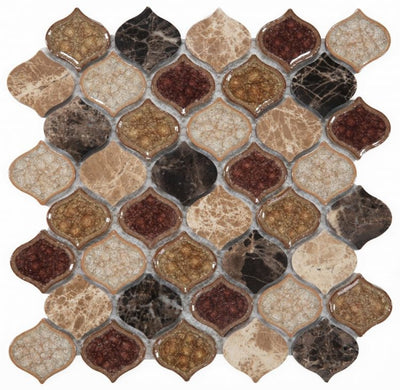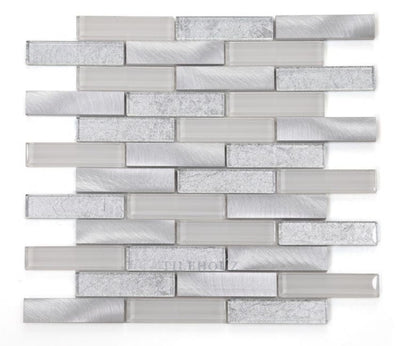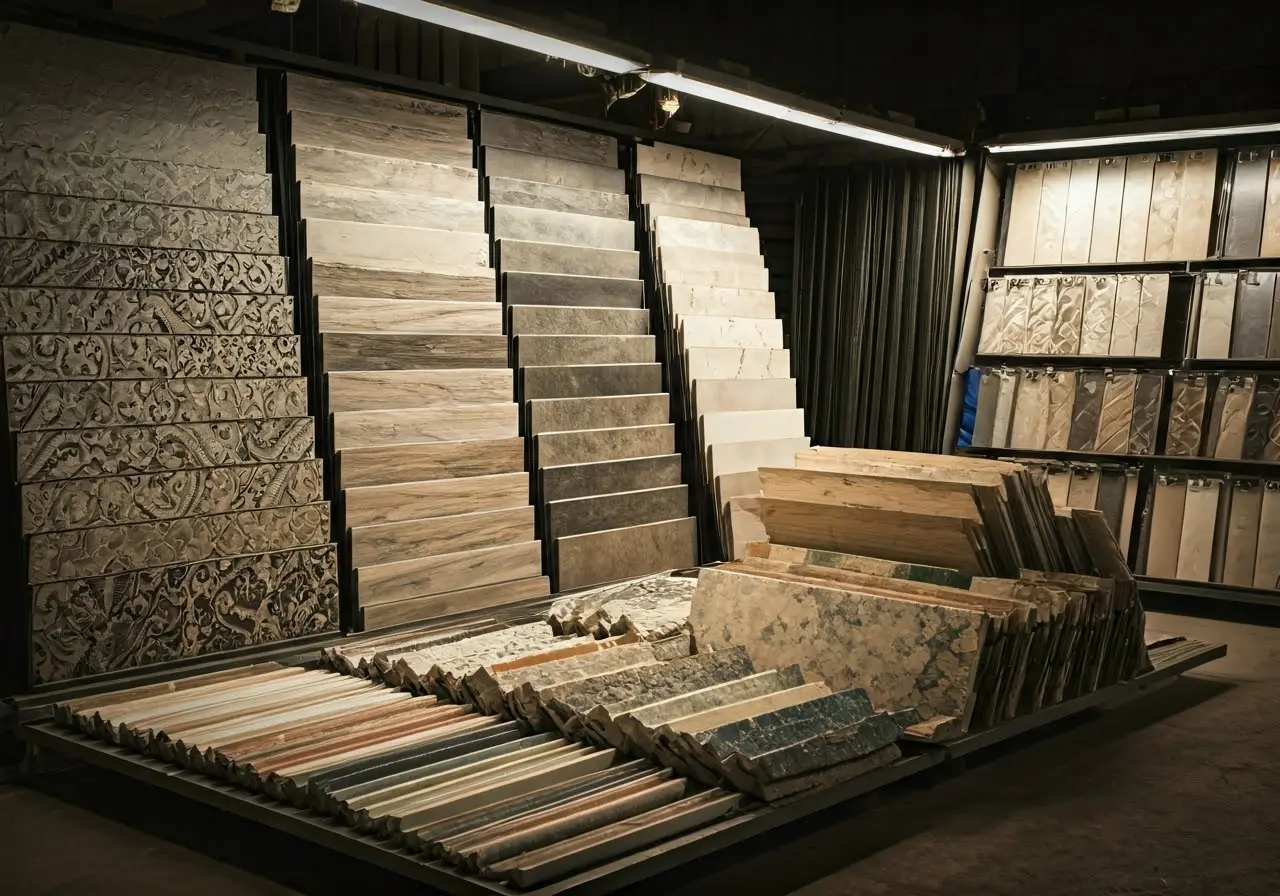The Ultimate Guide to Choosing the Right Ceramic Tiles for Your Home
Choosing the right ceramic tiles for your home can feel like a daunting task, but with a bit of guidance, it can be an exciting and rewarding experience. In this guide, we’ll walk you through everything you need to know to choose the perfect ceramic tiles for your space. From understanding the different types and their benefits, to tips on style and installation, we’ve got you covered.
Understanding the Different Types of Ceramic Tiles
Ceramic tiles come in a variety of types, each with its own unique properties. The most common types include glazed tiles, unglazed tiles, porcelain tiles, and terracotta tiles. Understanding the differences between these types can help you make an informed decision.
Glazed tiles are perhaps the most popular choice. They have a glass-like coating that can be glossy or matte, available in an endless array of colors and patterns. This glazing not only adds an aesthetic appeal but also provides a layer of protection, making the tiles resistant to stains and water. However, because of the smooth surface, they can become slippery when wet, so they might not be the best choice for wet areas like bathrooms.
Unglazed tiles, on the other hand, have a more natural and rustic look. They don’t have that glassy coating, which allows for a more textured surface. Because they’re not coated, they’re less slippery and are an excellent choice for outdoor spaces or areas that are prone to getting wet. However, they are more porous and can be prone to staining, so they might require sealing to protect them against moisture and dirt.
Porcelain tiles are a type of ceramic tiles that’s made from a finer, denser clay and fired at a higher temperature. This makes them incredibly durable and resistant to water, even more so than standard ceramic tiles. Because of these properties, porcelain tiles are suitable for both indoor and outdoor use. They can imitate the look of natural stone or wood, providing a practical yet stylish option for flooring and wall coverings.
Lastly, terracotta tiles bring a warm, earthy feel to any space. They are made from natural clay, usually left unglazed, and are known for their reddish-brown tones. They have been used for centuries for their beauty and rustic charm. However, terracotta tiles are quite porous and can easily absorb liquids, so they need to be sealed properly to prevent staining and damage from water.
Exploring the Benefits of Ceramic Tiles
Ceramic tiles are known for their durability, water resistance, and low maintenance. They are also available in a wide range of colors, patterns, and finishes, making them a versatile choice for any home.
One of the standout benefits of ceramic tiles is their durability. These tiles are incredibly hard, making them resistant to scratches and impacts. This makes them an ideal choice for high-traffic areas in your home, such as hallways, kitchens, and living rooms. Additionally, because they are so hard-wearing, they can handle heavy furniture and appliances without getting damaged.
Water resistance is another significant benefit. Unlike many other flooring options, ceramic tiles do not absorb water. This property makes them perfect for areas like bathrooms, kitchens, and laundry rooms, where spills and splashes are common. The water resistance also means they are less likely to harbor mold or mildew, contributing to a healthier home environment.
Ceramic tiles are also incredibly easy to maintain. A simple sweep and mop can keep them looking new and clean. For tougher stains or grime, a mild detergent or tile cleaner usually does the trick. Their low maintenance requirements make them an attractive option for busy homeowners who want something that looks good but doesn’t require constant upkeep.
Another benefit is their energy efficiency. Ceramic tiles have natural insulating properties, which means they can help keep your home cool in the summer and warm in the winter. This can contribute to lower energy bills and a more comfortable home environment year-round.
Choosing the Right Style and Design
When it comes to style and design, the options are virtually endless. Consider the overall aesthetic of your home and the specific look you want to achieve in each room. From classic and timeless to modern and trendy, there’s a ceramic tile design to suit every taste.
For a classic and timeless look, you might opt for neutral-colored ceramic tiles with a matte finish. These tiles can easily blend into any decor and provide a simple, elegant backdrop for your room. Think of traditional beige, cream, or light gray tiles that never go out of style. These neutral tones can make your space feel more open and airy, creating a calm and inviting atmosphere.
If you’re looking to make a bold statement, consider ceramic tiles with vibrant colors and intricate patterns. Moroccan-inspired tiles with their vivid hues and geometric designs can add a pop of personality and flair to any space. Similarly, tiles with a glossy finish can add a touch of glamour and luxury, reflecting light to make the room feel more spacious and bright.
For a modern and trendy look, consider using ceramic tiles that mimic the appearance of natural materials. Wood-look tiles are particularly popular, as they offer the warmth and beauty of hardwood without the associated maintenance issues. Stone-look tiles can bring a sense of rugged elegance to your space, perfect for creating a contemporary, industrial vibe.
Don’t forget about the size and layout of the tiles, which can also impact the overall design. Large-format tiles can make a small room feel more expansive, while smaller tiles can add texture and complexity to a design. Creative layouts like herringbone or chevron patterns can add a unique touch, making your tiled surfaces stand out as a focal point.
Practical Tips for Selecting Ceramic Tiles
Here are some practical tips to keep in mind when selecting ceramic tiles: always measure your space accurately, consider the tile’s slip resistance, think about the grout color, and remember to buy extra tiles for future repairs.
Measuring your space accurately is crucial before you start shopping for tiles. This will help you determine how many tiles you need, reducing waste and ensuring you don’t run short during installation. Make sure to account for any irregularities in your room’s shape, like alcoves or doorways, by including these in your measurements. It’s always a good idea to purchase an additional 10% to 15% more tiles than your calculated amount to cover breakages, cuts, and future repairs.
Slip resistance is another important factor, especially in areas that may get wet, like bathrooms or entryways. Look for tiles that have a higher coefficient of friction (COF) rating, which indicates better slip resistance. Textured or matte-finish tiles naturally provide more grip compared to glossy tiles, making them a safer option for flooring.
The color of the grout you choose can also have a significant impact on the overall aesthetic of your tiled area. Dark grout can hide dirt and stains better, making it a practical choice for high-traffic areas. However, light grout can create a seamless look, especially with lighter-colored tiles, making the room feel larger and more cohesive. It’s also worth considering stain-resistant or epoxy grout for added durability in busy areas.
Lastly, buying extra tiles for future repairs is a practical tip that often gets overlooked. Having a few spare tiles from the same batch ensures that you have matching tiles readily available in case any get damaged in the future. This can save you a lot of hassle down the line, as finding an exact match for your tiles later on might be difficult if the style gets discontinued.
Installation and Maintenance
Proper installation is key to ensuring your ceramic tiles look great and last for years to come. Consider hiring a professional for the best results. Additionally, understanding how to maintain your tiles will keep them looking new and vibrant for longer.
While installing ceramic tiles might seem like a straightforward DIY project, it can be more complex than it appears. Proper preparation of the surface is crucial to avoid issues like uneven tiles or weak adhesion. If you’re not confident in your tiling skills, it’s a good idea to hire a professional. A skilled installer will ensure that your tiles are laid out beautifully, with even spacing and a finished look that highlights the beauty of the tiles.
Maintenance of ceramic tiles is relatively simple. Regular sweeping and mopping will keep the tiles free from dirt and grime. For deeper cleaning, a mild detergent or specialized tile cleaner is usually all you need. Avoid using harsh chemicals as they can damage the tile surface over time. Another key aspect of maintenance is the grout; keeping it clean and sealed can prevent discoloration and degradation.
Every now and then, it’s beneficial to reseal both the tiles and the grout to maintain their appearance and longevity. This is especially important for areas exposed to a lot of moisture, like bathrooms and kitchens. Sealants create a protective barrier that prevents water, stains, and dirt from penetrating the surfaces, making them easier to clean and keeping them looking pristine for longer.
For any damaged tiles, it’s best to replace them promptly to avoid further issues. Having those extra tiles you bought during the initial purchase will come in handy here. Simply remove the damaged tile, clean the area, apply new adhesive, and place the new tile. Grouting the edges will complete the repair, making your tiled surface look as good as new.
Wrapping Up: Your Perfect Ceramic Tile Awaits
Choosing the right ceramic tiles for your home doesn’t have to be overwhelming. By understanding the different types available, considering your style preferences, and keeping practical tips in mind, you can confidently select tiles that will enhance the beauty and functionality of your space. Remember, the perfect tile is out there waiting for you!

























